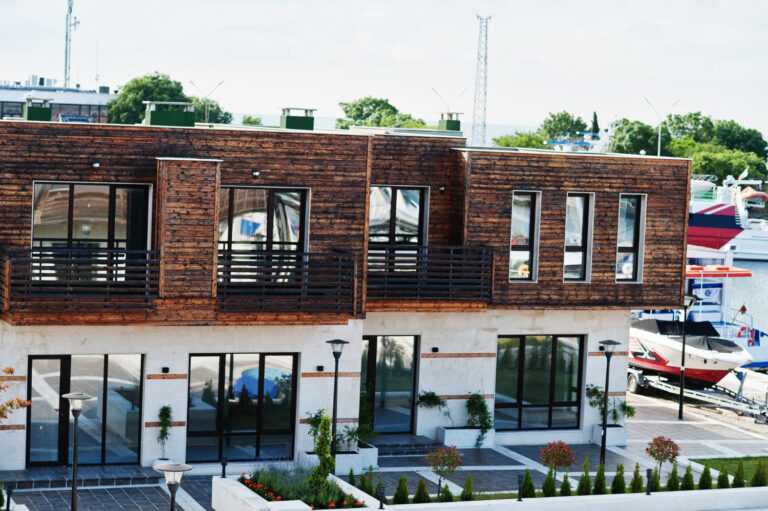Soft Washing Is the Best Defense Against Mold Growth!
Soft Washing vs. Mold: The Battle Your Home Needs to Win!
Mold and mildew can be a homeowner's worst nightmare. Soft washing is an effective solution to combat this problem. Soft washing a house can eliminate mold, mildew, and other harmful contaminants from exterior surfaces. This method is safer and more thorough than traditional pressure washing.
In this article, we will explore how soft washing combats mold growth on homes. We'll discuss the causes of mold in humid climates and preventive measures homeowners can take. The soft washing methodology will be explained in detail. Finally, practical steps for soft washing a house will be provided. By the end, readers will understand how to protect their homes from mold using soft washing techniques.
Understanding Mold and Mildew in Humid Climates
Mold and mildew thrive in humid environments. Soft washing houses is crucial to combat their growth. Mold spores are ubiquitous, floating in air and dust. They grow on various organic materials when moisture is present.
Characteristics of Mold and Mildew
Mold gradually destroys the surface it grows on. It penetrates porous materials like drywall. Mildew is an early-stage mold with a flat growth habit. Both emit a musty odor.
Common Causes in Humid Areas
High humidity (over 60% RH) encourages mold growth. Leaks, condensation, and poor ventilation also contribute. Crawl spaces and basements are prone to mold due to dampness.
Impact on Home Exteriors and Health
Mold damages building materials and furnishings. Exposure can cause allergic reactions and respiratory issues. Infants and those with weakened immune systems are at higher risk. Soft washing a house eliminates mold, preventing structural damage and health concerns.
Preventive Measures Against Mold and Mildew
Preventing mold growth is crucial for maintaining a healthy home. Regular cleaning and maintenance can help keep surfaces dry and free of organic materials that mold thrives on.
Regular Cleaning and Maintenance
Wipe down surfaces prone to moisture buildup, such as bathroom tiles and kitchen counters. Fix leaks promptly to avoid water damage and mold growth.
Improving Airflow and Sunlight Exposure
Ensure proper ventilation by opening windows and using fans to circulate air. Allow natural light into rooms to reduce humidity levels.
Using Mold-Resistant Materials and Coatings
When renovating or building, opt for mold-resistant products like mold-resistant drywall or paints. These materials are designed to inhibit mold growth.
Monitor indoor humidity levels using a hygrometer. Aim to keep humidity below 50% to discourage mold. Adjust ventilation, use dehumidifiers, or air conditioners if necessary.
By implementing these preventive measures, you can effectively reduce atmospheric moisture and minimize the risk of mold growth in your home.
Soft Washing Methodology
Soft washing uses low-pressure water and specialized cleaning solutions to safely remove contaminants. This method is gentler than traditional pressure washing, which relies on high-pressure water to clean surfaces.
Difference Between Soft Washing and Pressure Washing
Soft washing operates at around 500 PSI, while pressure washing can reach up to 3000 PSI. The lower pressure of soft washing is safer for delicate surfaces like roofs and siding. Pressure washing's high pressure can damage these materials.
Chemicals and Solutions Used in Soft Washing
Professional-grade sodium hypochlorite (12.5% bleach) mixed with water is the primary cleaning agent in soft washing. Bleach kills organic growth like algae, mold, and lichen. Additional products used include:
- Surfactants to help cleaning solutions penetrate and adhere to surfaces
- Odor maskers to neutralize bleach smell
- Plant protectors to prevent damage from runoff
- Degreasers for oil and grease stains
- Rust removers for rust stains
Safety Tips and Protective Gear
Proper safety gear is essential when soft washing:
|
Gear |
Purpose |
|---|---|
|
Goggles |
Protect eyes from splashes |
|
Respirator |
Filter out bleach fumes and mold spores |
|
Gloves |
Prevent skin contact with chemicals |
|
Boots |
Shield feet from chemical runoff |
Always read product labels and follow mixing instructions carefully. Rinse plants thoroughly before and after soft washing to minimize damage. With the right equipment, chemicals, and safety precautions, soft washing effectively cleans exterior surfaces.
Practical Steps for Soft Washing Your Home
Here are the practical steps for soft washing your home:
Preparing Your Home for Soft Washing
Protect plants, furniture, and decor from overspray. Close windows and doors tightly. Move vehicles away from the wash area. Cover fishponds and landscaping with plastic. Ensure pets and children are safely inside.
Detailed Step-by-Step Soft Washing Process
- Mix cleaning solution according to instructions.
- Apply solution from bottom to top using a low-pressure sprayer.
- Let solution sit for 5-10 minutes to activate.
- Rinse thoroughly with a wide fan nozzle at 400-800 psi.
- Spot treat stubborn areas with a pump sprayer.
|
Gear |
Purpose |
|---|---|
|
Goggles |
Protect eyes |
|
Respirator |
Filter fumes |
|
Gloves |
Prevent skin contact |
|
Boots |
Shield feet |
Aftercare and Preventing Future Growth
Inspect for any missed spots. Allow surfaces to dry completely. Remove protective coverings. Dispose of used chemical solutions properly. Monitor area for signs of regrowth. Maintain a regular cleaning schedule.
Conclusion
Soft washing is a powerful tool in the battle against mold and mildew on your home's exterior. By understanding the causes of mold growth, taking preventive measures, and employing the soft washing methodology, you can effectively protect your home from the damaging effects of these harmful contaminants. Contact Softwash Your Roof for a free quote at (786)876-3505 or john@softwashyourroof.com to learn more about how their services can help keep your home mold-free.
Regular maintenance, improved ventilation, and the use of mold-resistant materials can further reduce the risk of mold growth in your home. By following the practical steps outlined in this article and seeking the expertise of professionals like Softwash Your Roof, you can ensure that your home remains a healthy and safe environment for you and your family. Take action today to safeguard your home against the harmful effects of mold and mildew.








